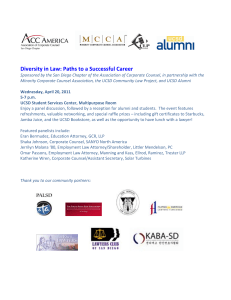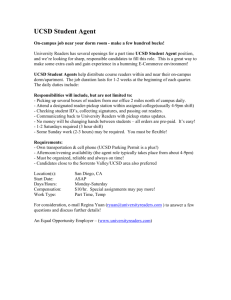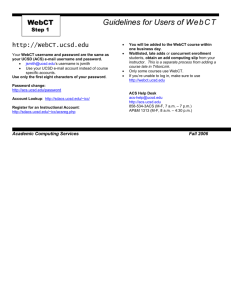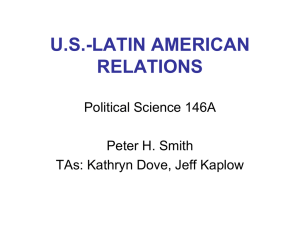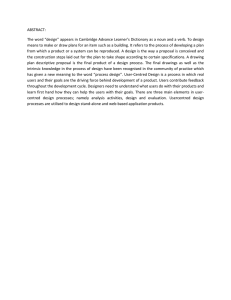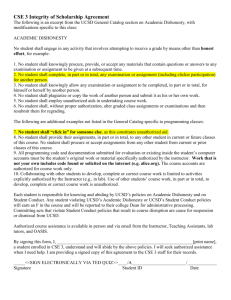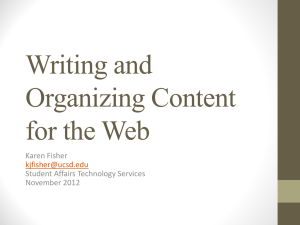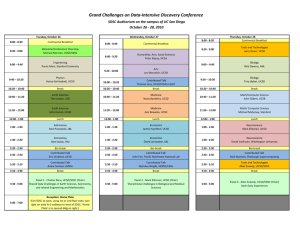Chapter2 GUI - WordPress.com
advertisement
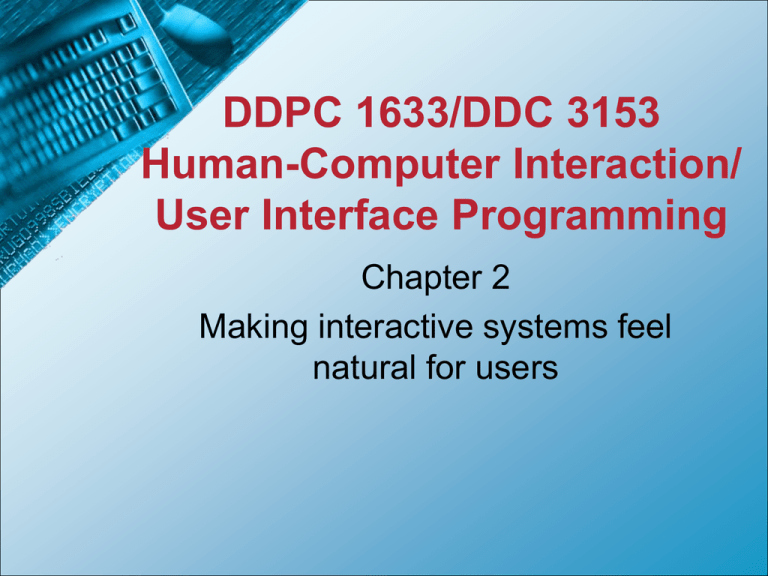
DDPC 1633/DDC 3153 Human-Computer Interaction/ User Interface Programming Chapter 2 Making interactive systems feel natural for users At the end of this lecture you should be able to … 1. Define what natural computing is and explain the main principles of natural computing 2. Explain the key concepts of user-centred system design (UCSD) 3. Explain what interactive design is 1. Natural computing The study of (i) how people process and store information, (ii) manipulate symbols, (iii)ascribe personal values to events, (iv)attribute cultural and emotive judgements and (v) use interactive artefacts to enhance our lifestyles Natural computing • Natural computing is not the same as saying the human brain is a computer. The human brain is MUCH more. • Information processing is just one of the capabilities of the human brain. The main idea of natural computing is that information processing is a natural process for us. – The user perspective • Provide conceptual framework for user modelling – The designer's perspective • Will provide better understanding of designs that will support users – The sustainability perspective • Need for well-designed systems is a necessity, not a luxury 2. Key features of usercentred system design • A central focus on the people who will use the systems, on their preferences and requirements • Building simple models of the users, the tasks and the technological systems • An iterative process • Prototyping and the evaluation of alternatives by users. – Designers have vast number of key decisions to make – Designers work with their own ‘mental model’ – can become subjective UCSD Problem statement Observation of existing systems Task analysis HTA Usability guidelines & heuristics Technical & legal etc. constraints Requirements gathering Requirement statement Design and storyboarding Storyboard Prototype implementation Functional Non-functional Prototype Evaluation Transcript & evaluation report Installation Final implementation The user or users • What do you think of when you read the phrase 'the user'? Do you think of: – Someone like yourself? – A stereotype 'user'? – A group of 'typical users'? – You picture individuals, each with different skills and preferences, different priorities and objectives? • Rather use ‘users’ – not one typical user Is UCSD sufficient? UCSD may not be enough – it may be impossible to capture needs/preferences of all users in 1 design People may need the additional facility to: • Customise a system • Add assistive technology for extreme circumstances or disability • Have adaptable systems that respond to the ways in which they are used or to a user's known profile (personalisation) Six elements of natural computing • Natural computing – A research and application area that draws from cognitive science, cognitive psychology, HCI, interaction design, sociology and anthropology • What can users do? – People drive technology to achieve objectives, not the other way round • Modelling users • Understanding the domain – wide diversity of disciplines • Understanding human learning • Meaning as a basis for practical action – links between theory & practice Core concepts These are common to both natural computing and user-centred system design 1. 2. 3. 4. 5. 6. User model Universal access Design for all Inclusive design Task models Technological platform 1. User model • Vary from: – Simple list of preferences to – Psychological profile • Strengths and weaknesses, skills, interests, potential, disabilities, age, culture, experience. • The more complete the model – the better it can be used in system design, but – the more expensive it is in terms of time, expertise and money to develop it. • Don’t think of the typical user only – also include the diversity and complexity of user population 2. Universal access Universal access is the objective of making systems that are accessible: – anytime, – anywhere and – to anyone of the intended user population. 3. Design for all It is similar to 'universal access', but also promotes the notion of: – careful design and design standards, so that users with special needs are not excluded from the use of a system. 4. Inclusive design • Universal access and design for all are essentially qualitative • Inclusive design is a quantitative measure by which designers can calculate the numbers of users who are excluded by specific design features (based on abilities of users) • Understanding and quantifying the consequences of different design options for diverse range of potential users 5. Task models • Output of task analysis • You must identify the key features of the task to be achieved – and recognise those aspects that must or can be changed. 6. Technological platform In the earlier days of system design – technology placed severe restrictions on the functionality of proposed systems These days – technological options are less restrictive and, we can expect our expectations to be fulfilled by the technology Interactive design • UCSD is an interactive and iterative process – Designer and design process work interactively – Emphasis on research, design and evaluation in cycle – Initial good ideas are iteratively revised in the light of experience and evaluation • Main stages of UCSD (refer to figure 2.1) – – – – Task analysis Requirements specification Prototyping Evaluation • Creation and reconciliation of three elements – User model – Task model – Technology model Strengths and weaknesses of interactive systems – Modern interactive systems can be powerful because they draw on powerful technology • If power is not utilised = weakness – Interactive systems may provide useful functions • Lack of usefulness = weakness – Interactive systems differ in the extent that they are usable • Lack of usability = weakness – Accessibility varies between good and poorly designed systems • Poor accessibility = weakness Summary… Natural computing provides a basis to begin to understand people and systems, and how people might use technology to good effect Exercise • What is UCSD? • What is natural computing? • What are six elements of natural computing? • What are the properties of an interactive system that make it easy to use?


